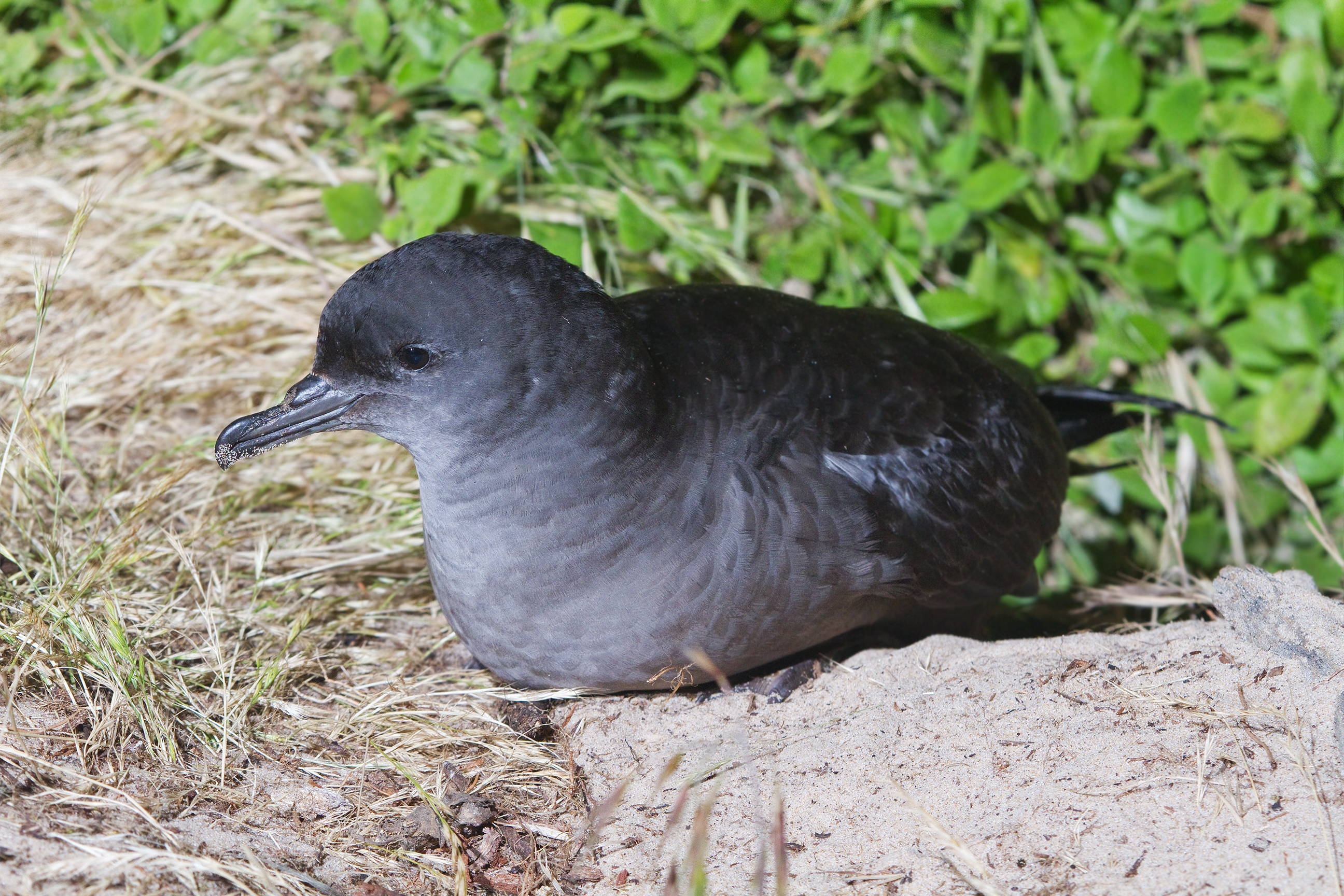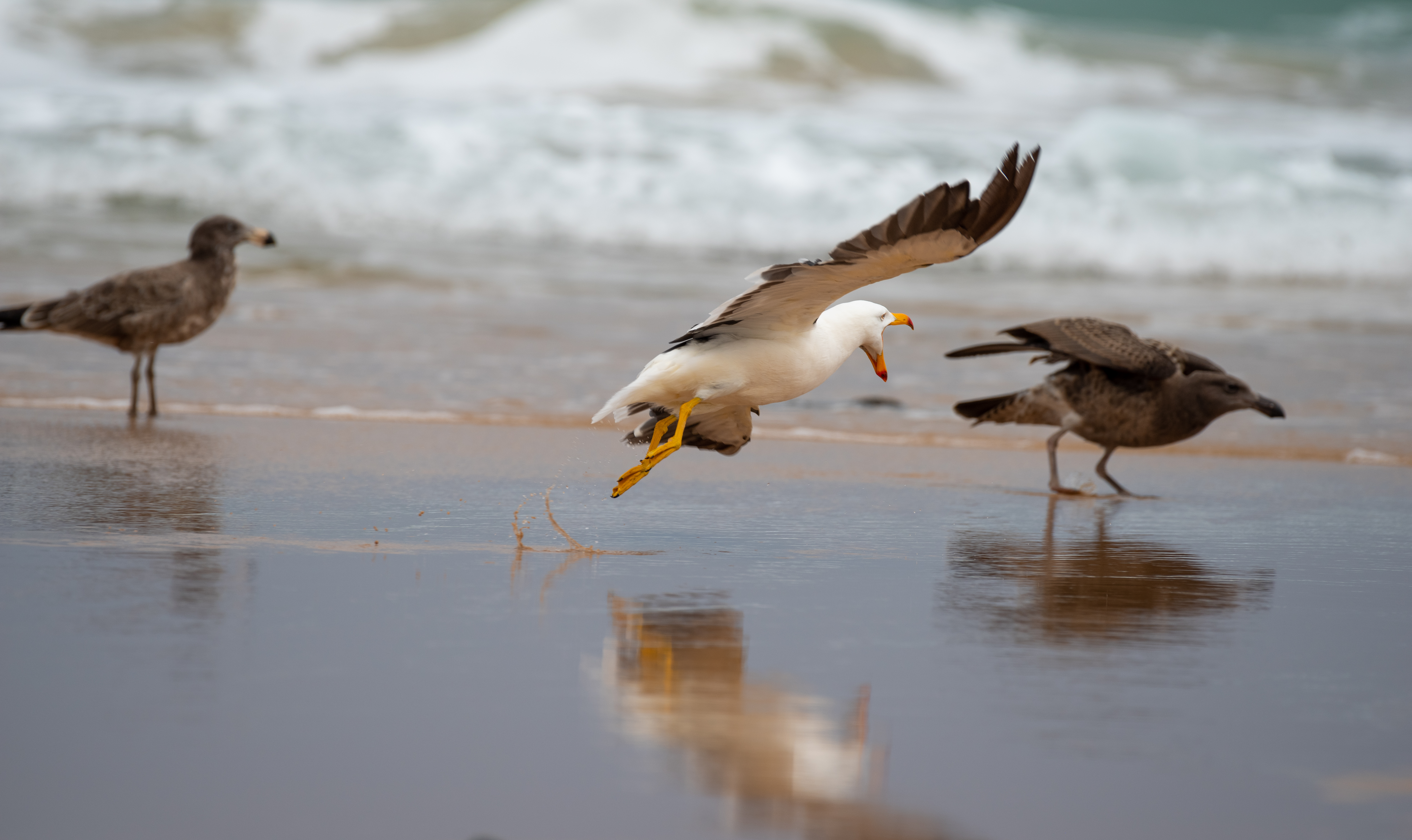|
Sloping Island
Sloping Island, incorporating the adjacent Sloping Reef, is an island nature reserve, with an area of 117 hectare, ha, in Tasmania in south-eastern Australia. It is part of the Sloping Island Group, lying close to the south-eastern coast of Tasmania around the Tasman Peninsula, Tasman and Forestier Peninsulas.Brothers, Nigel; Pemberton, David; Pryor, Helen; & Halley, Vanessa. (2001). ''Tasmania’s Offshore Islands: seabirds and other natural features''. Tasmanian Museum and Art Gallery: Hobart. Fauna Recorded breeding seabird and wader species are little penguin, short-tailed shearwater, Pacific gull, sooty oystercatcher and pied oystercatcher. Mammals present include common ringtail possums and European rabbits. History Shore-based whaling stations operated at Sloping Island, near the entrance to Frederick Henry Bay, in the 1820s. In 1911, readers made submissions to the local newspaper The Mercury regarding the history of the island: "It is called Sloping Island on the Ad ... [...More Info...] [...Related Items...] OR: [Wikipedia] [Google] [Baidu] |
Short-tailed Shearwater
The short-tailed shearwater or slender-billed shearwater (''Ardenna tenuirostris''; formerly ''Puffinus tenuirostris''), also called yolla or moonbird, and commonly known as the muttonbird in Australia, is the most abundant seabird species in Australian waters, and is one of the few Australian native birds in which the chicks are muttonbirding, commercially harvested. It is a migratory species that breeds mainly on small islands in Bass Strait and Tasmania and migrates to the Northern Hemisphere for the boreal summer. Taxonomy This shearwater appears to be related to the sooty shearwater, sooty and great shearwaters, which are also blunt-tailed, black-billed species, but its precise relationships are obscure (Austin, 1996; Austin ''et al.'', 2004). These are among the larger species of shearwater, which have been moved to a separate genus, ''Ardenna'' based on a phylogenetic analysis of mitochondrial DNA (Penhallurick & Wink, 2004). Ecology Each parent feeds the single chick fo ... [...More Info...] [...Related Items...] OR: [Wikipedia] [Google] [Baidu] |
Protected Areas Of Tasmania
Protected areas of Tasmania consist of protected areas located within Tasmania and its immediate onshore waters, including Macquarie Island. It includes areas of crown land (withheld land) managed by Tasmanian Government agencies as well as private reserves. As of 2016, 52% of Tasmania's land area has some form of reservation classification, the majority is managed by the Tasmania Parks & Wildlife Service (about 42% of total Tasmanian land area). Marine protected areas cover about 7.9% of state waters. Within each classification of reserve there may be a variation of IUCN categories Australia is a signatory to the Convention of Biological Diversity and as such has obligations to report the status of its National Reserve System.IUCN provides on its website a prescription for activities consistent with the categorisation system. Changes made to the ''Nature Conservation Act 2002'' in 2014 permit timber harvesting. These changes made in addition to the already established right ... [...More Info...] [...Related Items...] OR: [Wikipedia] [Google] [Baidu] |
Frederick Henry Bay
Frederick Henry Bay is a body of water in the southeast of Tasmania, Australia. It is located to the east of the South Arm Peninsula, and west of the Tasman Peninsula. Towns on the coast of the bay include Lauderdale, Tasmania, Lauderdale, Seven Mile Beach, Tasmania, Seven Mile Beach, Dodges Ferry, Tasmania, Dodges Ferry and Primrose Sands, Tasmania, Primrose Sands. The bay is accessible via Storm Bay from the south, and provides further access to Norfolk Bay to its east. The bay contains Seven Mile Beach on its northern shores, the closest surfing beach to Hobart. History It was first named “Baie du Nord” (North Bay) by Bruni d'Entrecasteaux in 1792–93. The original Frederick Henrik Bay (today's Blackman Bay and Marion Bay) was named by Abel Tasman in 1642 after Frederick Henry, Prince of Orange. In March 1773 Captain Tobias Furneaux, the first Englishman in Tasmanian waters, glimpsed the opening to D'Entrecasteaux Channel, thought that was Storm Bay, then anchored i ... [...More Info...] [...Related Items...] OR: [Wikipedia] [Google] [Baidu] |
European Rabbit
The European rabbit (''Oryctolagus cuniculus'') or coney is a species of rabbit native to the Iberian Peninsula (Spain, Portugal and Andorra) and southwestern France. It is the only extant species in the genus ''Oryctolagus''. The European rabbit has faced a population decline in its native range due to myxomatosis, rabbit haemorrhagic disease, overhunting and habitat loss. Outside of its native range, it is known as an invasive species, as it has been introduced to countries on all continents with the exception of Antarctica, often with devastating effects on local biodiversity due to a lack of predators. The average adult European rabbit is in length, and can weigh , though size and weight vary with habitat and diet. Its distinctive ears can measure up to from the Occipital bone, occiput. Due to the European rabbit's history of domestication, selective breeding, and introduction to non-native habitats, feral European rabbits across the world display a wide variety of Morpho ... [...More Info...] [...Related Items...] OR: [Wikipedia] [Google] [Baidu] |
Common Ringtail Possum
The common ringtail possum (''Pseudocheirus peregrinus'', Greek for "false hand" and Latin for "pilgrim" or "alien") is an Australian marsupial. It lives in a variety of habitats and eats a variety of leaves of both native and introduced plants, as well as flowers, fruits and sap. This possum also consumes caecotropes, which is material fermented in the caecum and expelled during the daytime when it is resting in a nest. This behaviour is called caecotrophy and is similar to that seen in rabbits. Taxonomy The common ringtail possum is currently classified as one of the two living species in the genus '' Pseudocheirus''; the species of '' Pseudochirulus'' and other ringtail genera were formerly also classified in ''Pseudocheirus''. Several subspecies have been described: *''Pseudocheirus peregrinus pereginus'', the type subspecies based on a collection made at Endeavour River *''Pseudocheirus peregrinus convolutor'', (Eastern ringtail possum or Southeastern ringtail possum) ... [...More Info...] [...Related Items...] OR: [Wikipedia] [Google] [Baidu] |
Mammal
A mammal () is a vertebrate animal of the Class (biology), class Mammalia (). Mammals are characterised by the presence of milk-producing mammary glands for feeding their young, a broad neocortex region of the brain, fur or hair, and three Evolution of mammalian auditory ossicles, middle ear bones. These characteristics distinguish them from reptiles and birds, from which their ancestors Genetic divergence, diverged in the Carboniferous Period over 300 million years ago. Around 6,640 Neontology#Extant taxon, extant species of mammals have been described and divided into 27 Order (biology), orders. The study of mammals is called mammalogy. The largest orders of mammals, by number of species, are the rodents, bats, and eulipotyphlans (including hedgehogs, Mole (animal), moles and shrews). The next three are the primates (including humans, monkeys and lemurs), the Artiodactyl, even-toed ungulates (including pigs, camels, and whales), and the Carnivora (including Felidae, ... [...More Info...] [...Related Items...] OR: [Wikipedia] [Google] [Baidu] |
Pied Oystercatcher
The pied oystercatcher (''Haematopus longirostris'') is a species of oystercatcher. It is a wading bird native to Australia and commonly found on its coastline. The similar South Island pied oystercatcher (''H. finschi'') occurs in New Zealand. Description The name "oystercatcher" is something of a misnomer for this species, because they seldom eat oysters, which are found mainly on rocky coastlines. Pied oystercatchers frequent sandy coastlines, where they feed mainly on bivalve molluscs, which are prised apart with their specially adapted bill. These adaptations allow the Pied oystercatchers to slip their bills between the ventral edges of these shelled organisms, further allowing them to sever the shells and reach the edible flesh inside. This Australian species is easily recognized by the characteristic 5–8 cm long orange-red beak, slender pink legs and black and white plumage. With the wings extended, a white wing-stripe is also visible. The male and female show ... [...More Info...] [...Related Items...] OR: [Wikipedia] [Google] [Baidu] |
Sooty Oystercatcher
The sooty oystercatcher (''Haematopus fuliginosus'') is a species of oystercatcher. It is a wading bird endemic to Australia and commonly found on its coastline. It prefers rocky coastlines, but will occasionally live in estuaries. All of its feathers are black. It has a red eye, eye ring and bill, and pink legs. Taxonomy John Gould described the sooty oystercatcher in 1845. Its species name is the Latin Latin ( or ) is a classical language belonging to the Italic languages, Italic branch of the Indo-European languages. Latin was originally spoken by the Latins (Italic tribe), Latins in Latium (now known as Lazio), the lower Tiber area aroun ... adjective ''fuliginosus'', "sooty". Two subspecies are recognised, the nominate from the coastline of southern Australia and subspecies ''ophthalmicus'' from northern Australia. The southern subspecies is larger and heavier than the northern. The northern one, with a more yellowish eye ring, is found from the Kimberleys across the ... [...More Info...] [...Related Items...] OR: [Wikipedia] [Google] [Baidu] |
Pacific Gull
The Pacific gull (''Larus pacificus'') is a gull, native to the coasts of Australia. It is moderately common between Carnarvon, Western Australia, Carnarvon in the west, and Sydney in the east, although it has become scarce in some parts of the south-east, as a result of competition from the kelp gull, which has "self-introduced" since the 1940s. Much larger than the ubiquitous silver gull, and much less common, Pacific gulls are usually seen alone or in pairs, loafing around the shoreline, steadily patrolling high above the edge of the water, or sometimes flying high on the breeze to drop a shellfish or sea urchin onto rocks. Diet The gulls' diet consists of a number various fish species and invertebrates. They frequently consume crabs, most often the species ''Ovalipes australiensis'' and ''Paragrapsus gaimardii.'' They also commonly eat ''Platycephalus bassensis'' (sand flatheads) and cephalopods, both of which are sourced from their regular consumption of waste from fish wh ... [...More Info...] [...Related Items...] OR: [Wikipedia] [Google] [Baidu] |
Little Penguin
The little penguin (''Eudyptula minor'') is the smallest species of penguin. It originates from New Zealand. It is commonly known as the fairy penguin, little blue penguin, or blue penguin, owing to its slate-blue plumage and is also known by its Māori language, Māori name . It is a Neritic zone, marine neritic species that dives for food throughout the day and returns to burrows on the shore at dusk, making it the only Nocturnality, nocturnal penguin species on land. The Eudyptula novaehollandiae, Australian little penguin (''Eudyptula novaehollandiae''), from Australia and the Otago region of New Zealand, is considered a separate species. ''Eudyptula minor'' feathers are dense in Melanosome, melanosomes, which increase water resistance and give them their unique blue colour. Taxonomy The little penguin was first described by German naturalist Johann Reinhold Forster in 1781. Several subspecies are known, but a precise classification of these is still a matter of dispute. ... [...More Info...] [...Related Items...] OR: [Wikipedia] [Google] [Baidu] |
Nature Reserve
A nature reserve (also known as a wildlife refuge, wildlife sanctuary, biosphere reserve or bioreserve, natural or nature preserve, or nature conservation area) is a protected area of importance for flora, fauna, funga, or features of geological or other special interest, which is reserved and managed for purposes of Conservation (ethic), conservation and to provide special opportunities for study or research. They may be designated by government institutions in some countries, or by private landowners, such as charities and research institutions. Nature reserves fall into different IUCN protected area categories, IUCN categories depending on the level of protection afforded by local laws. Normally it is more strictly protected than a nature park. Various jurisdictions may use other terminology, such as ecological protection area or private protected area in legislation and in official titles of the reserves. History Cultural practices that roughly equate to the establishmen ... [...More Info...] [...Related Items...] OR: [Wikipedia] [Google] [Baidu] |







